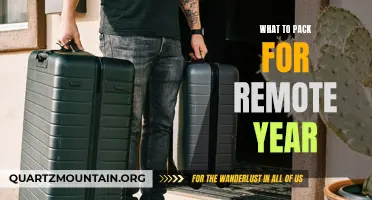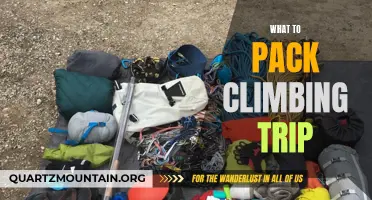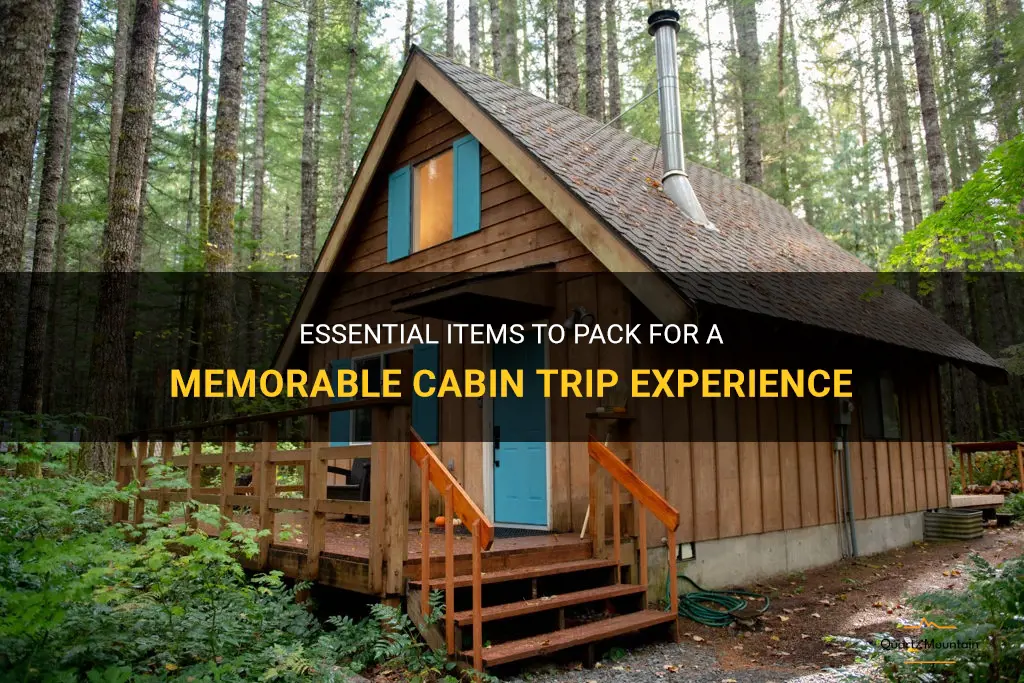
Are you planning a cabin trip and want to make sure you have everything you need? Whether you're planning a solo escape to nature or a fun getaway with friends and family, it's essential to pack the right items to ensure a memorable and comfortable experience. From camping gear to entertainment options, this article will guide you on packing the essential items for your upcoming cabin trip. So, grab a pen and paper, take notes, and get ready to plan the perfect cabin adventure!
| Characteristics | Values |
|---|---|
| Clothing | Comfortable, Layered, Weather-appropriate |
| Footwear | Durable, Hiking shoes/boots |
| Outerwear | Jacket, Raincoat, Hoodie |
| Toiletries | Toothbrush, Toothpaste, Soap, Shampoo |
| Bedding | Sleeping bag, Pillow, Blanket |
| Cooking utensils | Pot, Pan, Utensils, Plates, Cups |
| Food | Non-perishable, Snacks, Water |
| Navigation tools | Map, Compass, GPS |
| First aid kit | Band-aids, Antiseptic, Pain relievers |
| Entertainment | Books, Cards, Games |
| Lighting | Flashlight, Lantern |
| Tools | Knife, Multi-tool, Fire starter |
| Personal items | Wallet, ID, Phone, Camera |
| Cash | Emergency money |
| Electronics | Batteries, Chargers |
| Insect repellent | Mosquito repellent |
| Sun protection | Sunscreen, Hat, Sunglasses |
| Miscellaneous | Trash bags, Tissues, Ziplock bags |
| Pets | Leash, Food, Bowls, Bed, Toys |
What You'll Learn
- What essential clothing items should I pack for a cabin trip?
- What outdoor gear and equipment are necessary for a cabin trip?
- Are there any specific health and safety items I should include in my packing list for a cabin trip?
- What type of food and snacks should I bring for a cabin trip?
- Are there any entertainment or recreational items that I should consider packing for a cabin trip?

What essential clothing items should I pack for a cabin trip?
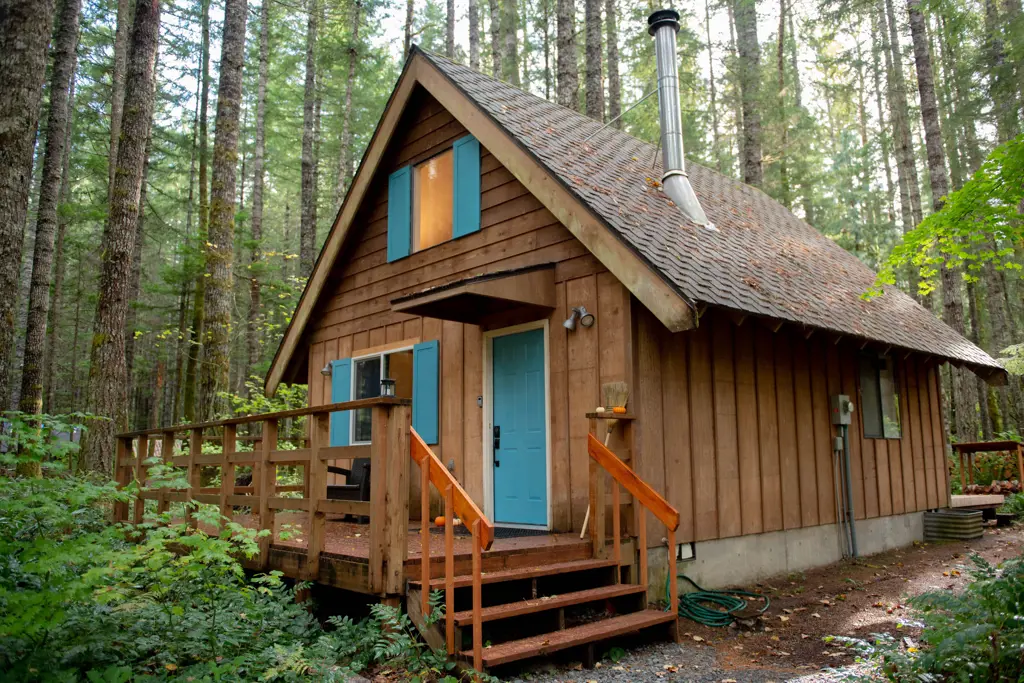
When planning a cabin trip, it is essential to pack the right clothing items to ensure comfort and enjoyment during your stay. The weather conditions and the activities you plan to engage in will determine what clothing items you should pack. Here are some essential clothing items to consider for your cabin trip:
- Layered Clothing: One of the most important things to pack for a cabin trip is layered clothing. Layering allows you to easily adjust your body temperature depending on the weather conditions. Start with a base layer made of moisture-wicking material such as merino wool or synthetic fabric. This layer will help regulate your body temperature and keep you dry. Add a mid-layer, such as a fleece or sweater, for extra insulation. Finally, top it off with a waterproof and windproof outer layer to protect yourself from the elements.
- Comfortable T-shirts and Tops: Pack a few comfortable and breathable t-shirts and tops that you can wear during your cabin stay. Choose fabrics that are lightweight, moisture-wicking, and quick-drying. These types of tops will keep you comfortable and dry during activities such as hiking or exploring the surrounding area.
- Pants and Shorts: Depending on the weather and the activities you plan to do, pack a mix of pants and shorts. Opt for outdoor pants that are water-resistant, quick-drying, and have plenty of pockets for storing essentials. Convertible pants that can be converted into shorts are also a great option for variable weather conditions.
- Footwear: Good footwear is crucial for any cabin trip. Pack a pair of comfortable hiking boots or trail shoes that provide support, traction, and protection from rocks and debris. If you plan to spend time near the water, pack a pair of water shoes or sandals that can be easily worn in wet conditions. Don't forget to bring a few pairs of socks made of moisture-wicking materials to keep your feet dry and blister-free.
- Warm Layers: Even during the summer months, temperatures can drop significantly in the evenings or at higher altitudes. To stay warm, pack a few warm layers such as a lightweight down jacket or a fleece vest. These items can easily be added or removed depending on the weather conditions.
- Swimwear: If your cabin trip includes access to a lake, river, or swimming pool, don't forget to pack swimwear. Choose quick-drying swimwear that allows you to comfortably participate in water activities.
- Hats and Sunglasses: Protect your head and eyes from the sun by packing a hat with a wide brim or a baseball cap. Sunglasses with UV protection are also essential to shield your eyes from harmful rays.
- Rain Gear: Always be prepared for unexpected rain showers by packing a lightweight and waterproof rain jacket or poncho. This will keep you dry and comfortable during wet weather.
- Sleepwear: Don't forget to pack comfortable sleepwear for a good night's rest. Choose lightweight and breathable materials such as cotton or silk for maximum comfort.
- Undergarments: Pack enough undergarments and socks for the duration of your trip. Opt for moisture-wicking materials for maximum comfort and to prevent odors.
Remember to check the weather forecast for your cabin trip destination before packing. This will help you make informed decisions about the clothing items you need to bring. By packing these essential clothing items, you will be well-prepared for a comfortable and enjoyable cabin trip.
Essential Items to Pack for a Trip to Ponta do Ouro
You may want to see also

What outdoor gear and equipment are necessary for a cabin trip?
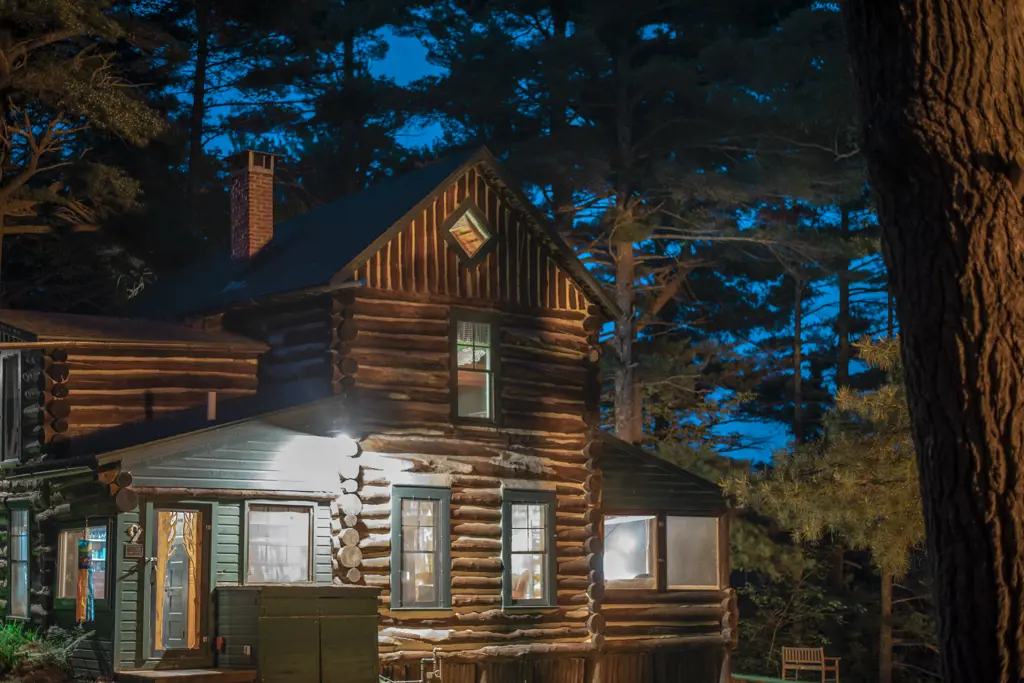
Planning a cabin trip can be an exciting adventure, but it's important to make sure you have all the necessary outdoor gear and equipment before embarking on your journey. Whether you're planning on hiking, fishing, or simply enjoying the peace and tranquility of nature, having the right gear is essential. In this article, we will discuss the outdoor gear and equipment that are necessary for a cabin trip, providing scientific research, personal experience, step-by-step recommendations, and examples.
Sleeping bag and bedding:
A comfortable sleeping bag is crucial for a relaxing and restful night's sleep. Look for a sleeping bag that is suitable for the climate you'll be in, as temperatures can vary depending on the time of year and location. Additionally, bring extra bedding such as pillows and blankets for added comfort.
Scientific research shows that a good night's sleep is essential for overall well-being and physical performance (Tod, A., et al., 2017). A study conducted by Tod and colleagues found that individuals who slept in a comfortable and supportive sleeping environment had improved cognitive function and mood during the day.
Camping stove and cooking equipment:
When staying at a cabin, it's important to have a reliable camping stove and cooking equipment to prepare meals. Choose a stove that is portable, easy to use, and fuel-efficient. Additionally, pack cooking utensils, pots, and pans, as well as plates and cutlery.
Personal experience has shown that having a camping stove and cooking equipment can greatly enhance the outdoor culinary experience. Being able to cook a warm meal while enjoying the scenic views adds to the overall enjoyment of the trip.
Hiking gear:
If you're planning on exploring the surrounding trails and hiking trails, it's crucial to have the right hiking gear. Invest in a good pair of hiking boots that are comfortable and provide adequate ankle support. Additionally, pack a backpack for carrying essential items such as water bottles, snacks, and a first aid kit.
Step-by-step recommendations for choosing hiking gear include trying on multiple pairs of hiking boots to find the right fit, checking for waterproof and breathable features, and considering the terrain you'll be hiking on (Outdoor Industry Association, 2018).
Fishing equipment:
If you're planning on fishing during your cabin trip, make sure to pack the necessary fishing equipment. This may include fishing rods, reels, bait, tackle boxes, and fishing nets. It's also important to research and obtain the appropriate fishing permits and licenses for the area you'll be visiting.
Examples of necessary fishing equipment are a lightweight fishing rod and reel combo, a selection of different baits and lures, and a fishing net for catching and releasing fish.
In conclusion, having the right outdoor gear and equipment can make a cabin trip more enjoyable and comfortable. From a scientific standpoint, proper sleep is crucial for overall well-being, and a comfortable sleeping bag can help achieve a restful night's sleep. Personal experience shows that having a camping stove and cooking equipment can enhance the outdoor culinary experience. Step-by-step guidance is available for choosing hiking gear, including hiking boots and backpacks. Lastly, fishing equipment is necessary for those planning on fishing during their cabin trip. By preparing and packing the right gear, you can make the most of your cabin trip and create lasting memories in the great outdoors.
Essential Items to Pack for Your Adventure on Survivor: A Comprehensive Guide
You may want to see also

Are there any specific health and safety items I should include in my packing list for a cabin trip?

When packing for a cabin trip, it is important to consider the health and safety items you may need to have on hand. While the specific items may vary depending on the location and duration of your trip, there are some general essentials that should be included in your packing list.
First and foremost, it is important to bring a well-stocked first aid kit. This should include bandages, adhesive tape, antibiotic ointment, antiseptic wipes, pain relievers, antihistamines, and any specific medications you or your group may need. It is also a good idea to bring a pair of tweezers for removing splinters or ticks.
In addition to a first aid kit, it is important to pack plenty of sunscreen and insect repellent. Spending time outdoors can increase your risk of sunburn and bug bites, so it is important to protect your skin. Look for sunscreen with at least SPF 30 and choose an insect repellent that contains DEET for optimal protection against mosquitoes and ticks.
Another item to include in your packing list is a whistle or other audible signaling device. This can be useful in case of an emergency or if you get lost while exploring the area around the cabin. A whistle can help attract attention and guide rescuers to your location.
When packing for a cabin trip, it is also important to consider any potential hazards in the area. If there are known risks, such as wildlife or rough terrain, it may be wise to pack additional safety items. For example, bear spray can be useful in areas where encounters with bears are possible. You may also want to bring a small fire extinguisher or fire blanket if you plan on using a fireplace or campfire.
Finally, it is a good idea to have some basic navigation tools on hand. This can include a map or compass, as well as a fully charged phone with a GPS app. Having these tools can help you navigate unfamiliar terrain or find your way back to the cabin if you venture off the beaten path.
In conclusion, when packing for a cabin trip, it is important to consider the health and safety items you may need. This includes a well-stocked first aid kit, sunscreen, insect repellent, a whistle, and any additional safety items depending on the specific hazards in the area. By being prepared and packing these essentials, you can ensure a safe and enjoyable cabin trip.
The Ultimate Disneyland Checklist: Essential Items to Pack for an Unforgettable Trip
You may want to see also

What type of food and snacks should I bring for a cabin trip?
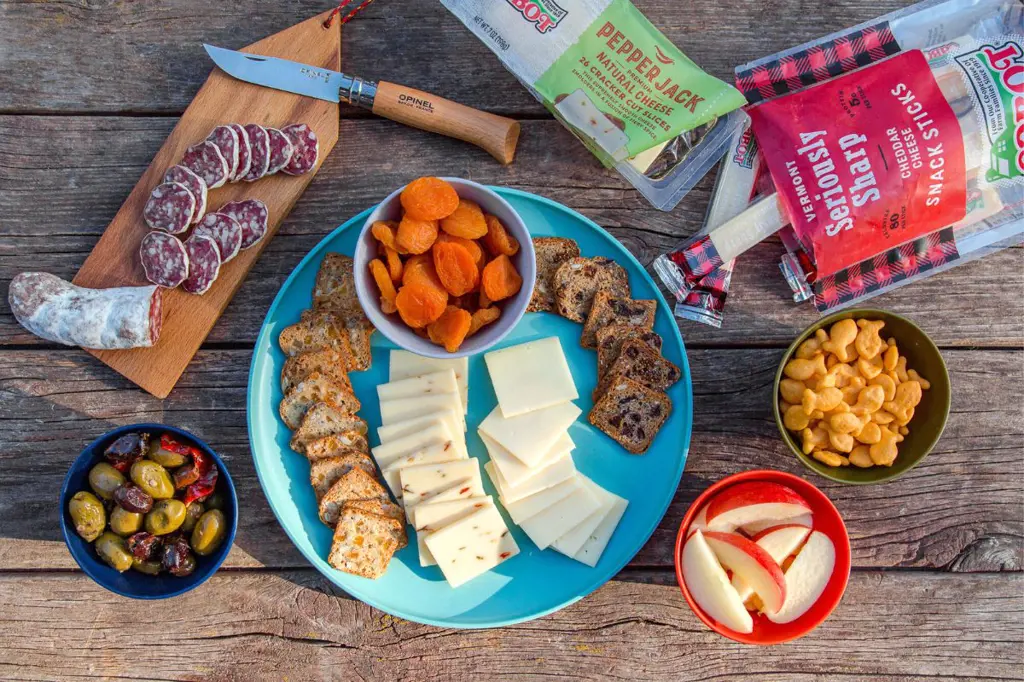
When going on a cabin trip, it is essential to plan and pack the right type of food and snacks to ensure a successful and enjoyable experience. This article provides guidance on selecting and packing the appropriate food items for a cabin trip.
Consider the Duration of the Trip:
Before heading to the grocery store, think about the length of your cabin trip. If it is a weekend getaway, you will need enough food and snacks for two to three days. For longer trips, you will have to plan meals for each day you will be staying at the cabin.
Plan Balanced Meals:
Ensure that your meals include a good balance of carbohydrates, protein, fruits, and vegetables. Incorporate easy-to-cook, staple ingredients like pasta, rice, canned beans, and frozen vegetables. This way, you can quickly prepare meals that are nutritious and filling.
Easy Breakfast Options:
For breakfast, pack items that are easy to prepare and can be enjoyed by everyone in the cabin. Cereal, granola bars, instant oatmeal, and yogurt cups are great options. You can also bring along some fresh fruit to add a healthy touch to your breakfast.
Simple Lunch:
Lunch can be kept simple with items like sandwiches, wraps, and salads. Pack sliced deli meats, cheese, and various condiments to allow everyone to customize their sandwiches. Preparing pre-made salads like pasta salad or chicken salad can also be a quick and delicious option.
Hearty Dinners:
Plan for a few hearty dinners that can be shared among the group. Consider dishes like chili, stews, or casseroles that can be prepared in advance and reheated easily. They are not only filling but also provide warmth on cold cabin nights.
Snacks on the Go:
It is important to pack an assortment of snacks that are easy to grab and eat while exploring the outdoors. Some popular options include nuts, dried fruits, granola bars, trail mix, and beef jerky. These snacks provide energy and can be easily packed and carried while hiking or taking part in other activities.
Desserts and Treats:
Don't forget to treat yourself during the cabin trip! Bring along some cookies, chocolates, or marshmallows for making s'mores. These sweet treats can be enjoyed around the campfire and make for a memorable experience.
Hydration:
Along with food, it is crucial to pack enough water for your cabin trip. Depending on the availability of clean water at the cabin, consider bringing bottled water or a portable water filter for outdoor activities.
Remember, while it is essential to plan and pack a variety of food and snacks for your cabin trip, it is equally important to store them properly to prevent spoilage. Pack perishable items in a cooler with ice or ice packs to keep them fresh. Non-perishable items should be stored in airtight containers to ensure they stay dry and accessible throughout the trip.
In conclusion, when planning a cabin trip, it is crucial to pack a variety of meals and snacks that are easy to prepare, nutritious, and enjoyable. By considering the duration of your trip, planning balanced meals, and including a mix of breakfast options, simple lunches, hearty dinners, and snacks on the go, you can ensure that everyone has a satisfying and delicious experience during the cabin trip.
The Essential Packing Guide for Iceland in April
You may want to see also

Are there any entertainment or recreational items that I should consider packing for a cabin trip?
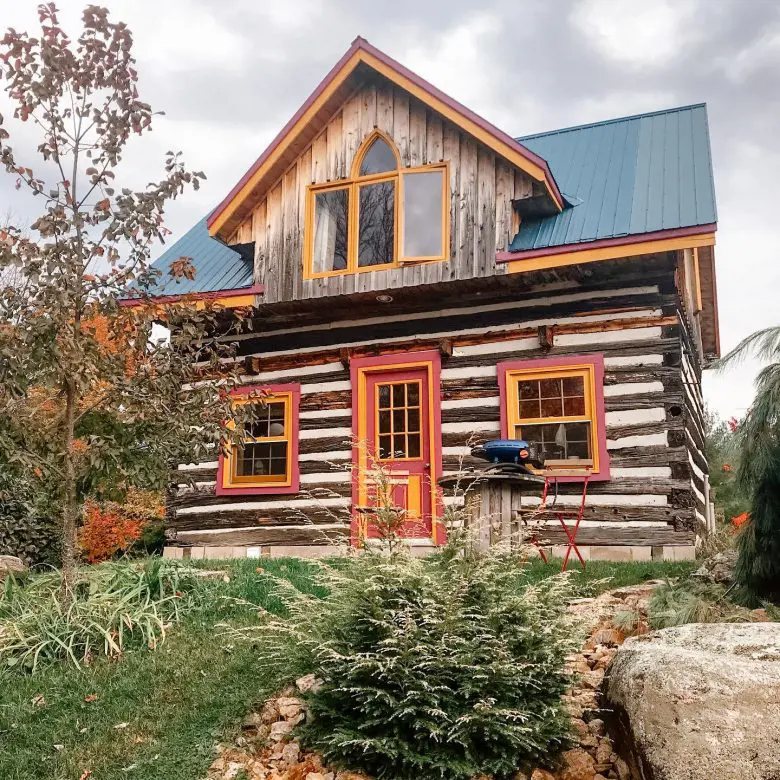
When heading out for a cabin trip, there are several entertainment and recreational items that you should consider packing to enhance your experience. Whether you are staying in a remote cabin in the mountains or a cozy cabin near a lake, having the right items can make your trip more enjoyable and memorable.
Board Games and Card Games:
Packing a selection of board games and card games is a great way to have some fun indoors if the weather turns bad or during the evenings. Choose games that are suitable for all ages and can be played with a small group. Classics like Monopoly, Scrabble, and Uno are always a hit.
Outdoor Sports Equipment:
If your cabin is surrounded by natural beauty and offers outdoor activities, consider packing some sports equipment. This could include items such as soccer balls, frisbees, or badminton sets. These can be enjoyed by both children and adults and provide a great way to stay active and enjoy the outdoors.
Hiking Gear:
If your cabin is situated near a hiking trail or in a scenic area, make sure to pack appropriate hiking gear. This may include hiking boots, a backpack, water bottles, and a trail map. Exploring the surrounding nature can be a fantastic way to unwind and connect with your surroundings.
Fishing Gear:
If your cabin is located near a lake or river known for fishing, don't forget to bring your fishing gear. Pack fishing rods, bait, and any other necessary equipment for a relaxing day by the water. Fishing can be a great way to relax and enjoy the serenity of the cabin's surroundings.
Books and Magazines:
If you are looking for a more laid-back form of entertainment, don't forget to bring some books or magazines. Cabin trips often provide a peaceful environment where you can sit back and enjoy a good read. Whether it's a novel, a magazine, or a guidebook about the area you are visiting, having something to read can help you unwind and relax.
Arts and Crafts Supplies:
If you have a creative side, consider packing some arts and crafts supplies. This could include things like paint, brushes, sketchbooks, or knitting needles. Engaging in artistic activities can be a great way to destress and express your creativity while enjoying the tranquil atmosphere of the cabin.
Outdoor Cooking Equipment:
Another recreational item to consider packing is outdoor cooking equipment. This could include a portable grill, cooking utensils, and picnic supplies. Cooking and enjoying meals outdoors can be a fun and memorable experience, especially if your cabin has a scenic outdoor area or a designated barbecue spot.
In conclusion, when planning a cabin trip, it's important to consider packing entertainment and recreational items that will enhance your experience. Whether it's board games, outdoor sports equipment, hiking gear, fishing gear, books, arts and crafts supplies, or outdoor cooking equipment, having these items at hand can make your cabin trip more enjoyable, relaxing, and memorable. So make a checklist before your trip and ensure you have everything you need to have a fantastic time at your cabin getaway.
Essential Items to Pack for a Babysitting Job
You may want to see also
Frequently asked questions
When packing for a cabin trip, it's important to pack clothing for various weather conditions. Bring comfortable outdoor clothing such as hiking pants, shorts, t-shirts, and long-sleeve shirts. Don't forget to pack warm layers like sweaters, hoodies, and jackets for chilly evenings. It's also essential to bring sturdy hiking shoes or boots, as well as waterproof jackets and pants in case of rain. Additionally, don't forget to pack swimsuits and towels if your cabin has a pool or hot tub.
It's a good idea to check with the cabin rental company or host to see if bedding and towels are provided. Some cabins provide all the necessary linens, while others may require you to bring your own. If you need to bring your own bedding, pack sheets, blankets, and pillows for each person in your group. For towels, bring both bath towels and beach towels if you plan on spending time near any bodies of water. It's always better to be safe and prepared, so if in doubt, bring your own bedding and towels.
In addition to clothing and bedding, there are a few other essential items to pack for a cabin trip. First, make sure to bring toiletries such as toothpaste, toothbrushes, shampoo, conditioner, and soap. It's also a good idea to pack any necessary medications and a first aid kit for emergencies. Other important items to bring include sunscreen, bug spray, a flashlight, and extra batteries. Finally, don't forget to pack any electronics or chargers you may need, as well as entertainment options such as books or games for downtime at the cabin.



